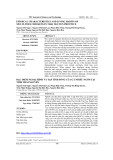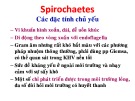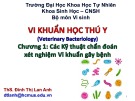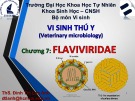
VNU Journal of Science: Natural Sciences and Technology, Vol. 41, No. 1 (2025) 43-60
43
Original Article
New Records of Colubridae and Updated List of Snakes
(Reptilia: Squamata: Serpentes) in Gia Lai Province, Vietnam
Vu Bao Minh1, Nhan Nguyen Pham Sy2, Nguyen Thien Tao3, Nguyen Quoc Huy3, 4,5,*
1VNU University of Science, 334 Nguyen Trai, Thanh Xuan, Hanoi, Vietnam
2The 108 Military Central Hospital, 1 Tran Hung Dao, Hanoi, Vietnam, Vietnam
3Institute of Genome Research Vietnam Academy of Science and Technology,
18 Hoang Quoc Viet, Cau Giay, Hanoi, Vietnam
4Chengdu Institute of Biology, Chinese Academy of Sciences, Chengdu, China
5University of Chinese Academy of Sciences, Beijing, China
Received 10th April 2024
Revised 11th December 2024; Accepted 11th December 2024
Abstract: We report six new records of snakes belonging to the Colubridae family based on the
reptile collections in Kon Chu Rang Natural Reserve, Gia Lai Province, including: Boiga bourreti;
Hebius khasiensis; Dryophiops rubescens; Lycodon anakradaya; L. cf. truongi and Oligodon
culaochamensis. Moreover, we further described 14 snake species collected during the field
survey, including: Ahaetulla prasina; Boiga guangxiensis; Bungarus candidus; B. fasciatus;
Dendrelaphis ngansonensis; Lycodon subcinctus; Liopeltis pallidonuchalis; Pareas hamptoni;
Psammodynastes pulverulentus; Ptyas multicincta; Rhabdophis chrysargos; Sibynophis collaris;
Trimerodytes percarinatus and Trimeresurus vogeli. In addition, we also provide an updated list of
63 snake species from Gia Lai Province. The snake fauna of Gia Lai Province contains several
species of conservation concern with four species listed in the Governmental Decree
No. 84/2021/ND-CP (2021), seven species listed in the Vietnam Red Data Book (2007), six
species listed in the IUCN Red List (2024), and four species listed in the CITES (2023).
Keywords: New record, snakes, taxonomy, Kon Chu Rang Nature Reserve, Gia Lai Province.
1. Introduction *
Vietnam is a country characterized by a
tropical monsoon climate and remarkable
biodiversity, with animal species distributed
_______
* Corresponding author.
E-mail address: huynguyen17295@gmail.com
https://doi.org/10.25073/2588-1140/vnunst.5664
across plains, midlands, and mountainous regions
[[1]]. Regarding reptiles, 192 different snake
species have been recorded, the majority of which
are belonging to the Colubridae family [[2]].
Kon Chu Rang NR has a surface area of
approximately 15,288 ha (No. 28/2004/QD-
UB), and is part of an extended region of the
Central Annamites Subregion [[3], [4]], hosting
the highest diversity of amphibians in

V. B. Minh et al. / VNU Journal of Science: Natural Sciences and Technology, Vol. 40, No. 4 (2024) 43-60
44
Indochina and a high level of local endemism,
making it a hotspot for new species discovery
[[3]-[5]].
In the past two decades, several
herpetological surveys have been conducted on
Kon Chu Rang NR. The reserve's varied terrain
and vegetation support 10 species of snakes
from three families, contributing to Vietnam's
overall species diversity [[6]]. One significant
study is the Biodiversity Report on Kon Ka
Kinh – Kon Chu Rang in K Bang District, Gia
Lai Province, recently endorsed by the Green
Viet Water Biodiversity Conservation Center
(GreenViet), which listed 13 species of snakes,
with 10 species from the Colubridae family,
two from the Elapidae family, and one from the
Viperidae family [[7]].
Based on the analysis of specimens
collected in 2018 and 2023, previously stored at
the Institute of Genome Research, four families
and around 20 species have been preliminarily
identified. Notably, some of these species were
recorded for the first time in Gia Lai Province,
including Boiga bourreti Tillack, Ziegler &
Khac Quyet, 2004; Dryophiops rubescens
(Gray, 1835); Hebius khasiensis (Boulenger,
1890); Lycodon anakradaya Nguyen, Duong,
Wood & Grismer, 2022; L cf. truongi Nguyen,
Duong, Wood & Grismer, 2022; and Oligodon
culaochamensis Nguyen, Nguyen, Nguyen,
Phan, Jiang & Murphy, 2017.
2. Materials and Methods
Field surveys were conducted in Kon Chu
Rang (NR) in 2018 by L. M. Anh, N. D. H. Vu,
N. Orlov, and in June 2023 by N. Q. Huy, N. T.
Hoa, N. N. Hai, H. V. Chung, N. T. Ngan,
N. Orlov, O. B. Moseyko. Specimens were
collected by hand or by using a snake hook
between 8:00 and 23:00 hrs. Most specimens
were photographed in life. Specimens were
euthanized in a closed vessel with a piece
of cotton wool containing ethyl acetate
(Simmons, 2002) [[8]], fixed in 80% ethanol
and subsequently stored in absolute ethanol.
Tissue samples of some species were kept
separately in 90% ethanol. Specimens were
deposited in the collections of the Institute of
Genome Research (IGR), Vietnam Academy of
Science and Technology (VAST), Hanoi,
Vietnam.
Taxonomic identification of the specimens
was made based on the following: Pope, Smith,
Taylor, Gumprecht, Stuart et al., Nemes et al.,
[[9]-[14] and some relevant articles are cited in
the description of each species. For common
names and locations, we followed Nguyen et
al., and Uetz et al., [2, [15]].
2.1. Morphological Characters
Measurements, except body and tail lengths,
were taken with a slide−caliper to the nearest
0.1 mm in preserved specimens; all measures on
the body were measured to the nearest millimeter.
The numbers of dorsal scale rows are given at one
head length behind the head, at midbody, and one
head before vent, respectively. Scalation was
studied by using a binocular.
The abbreviations utilized for morphometric
measurements are outlined in detail below: SVL:
Snout–vent length; TaL: Tail length; TL: Total
length; ED: Eye diameter (horizontal diameter of
eyes); VEN: Ventral plates; SC: Subcaudal plates:
Single/divided; Cloacal: Single/divided; Sup:
Number of subpralabials; Lor–(r/l): Number of
loreal scales; Nasal: Entire/Divided; PreOc:
Number of preoculars; Subocular:
Absent/Present; PostOC: Number of postoculars;
ATem: Number of anterior temporals; Ptem:
Number of posterior temporals: Number of
infralabials. The number of ventral scales was
counted according to Dowling [13]. Bilateral
scale counts are given as right/left. About the
pattern on the snake: BDw: Number of white
bands on the body; BDb: Number of black bands
on the body; BVw: Number of white bands on the
tail; BVb: Number of black bands on the tail;
Bellycol: Coloration of the belly; Belly band:
Absent/Present.
3. Result and Discussion
Taxonomi account
Family Colubridae
Ahaetulla prasina (Boie, 1827)

V. B. Minh et al. / VNU Journal of Science: Natural Sciences and Technology, Vol. 41, No. 1 (2025) 43-60
45
Oriental whip snake/Rắn roi thường (Figure 1)
Synonym:
Coluber Nasutus Shaw 1802
Specimen examined (n = 10): Five males
(KCR.2023. 175, 215, 216, 217, 218) and four
females (KCR.2023. 174, 197, 248; VNMN
07011). One subadult female (KCR.2023. 147).
Description: The morphological characters
of the specimen from Kon Chu Rang NR
agreed well with the description of Pope and
Nemes et al., [[9], [14]]. TL 1062−1097 mm in
adult males, (SVL: 715–740 mm, TaL:
363−368 mm); TL 1062–1197 mm in adult
females, (SVL: 699–774 mm, TaL: 346−386
mm). TL 787 mm in subadult female, (SVL:
528 mm, TL: 259 mm). Head long and narrow,
pupil horizontal, snout pointed, eyes are large
(ED: 4.20–4.55 mm); loreal 2/2, not in contact
with eyes; preocular single, suboculars absent;
postocular 2/2; anterior temporal 1/1, posterior
temporal scale 2/2; subpralabials 9/9, largest
scales 7/7; infralabials 8/8; dorsal scale rows
15–15–15, scales equal; ventral 187−200;
cloacal single; subcaudal 151, divided.
Coloration in life: Dorsum
gray/green/yellow with small dark and light
spots; forehead with light streak; light
postocular streak; light labials; venter
gray/green/yellow.
Notes: There is one specimen (KCR.2023. 248)
that has 11 scales of subpralabials and appears
subocular on the left side of the head.
Distribution: This is a widespread species
known from Lai Chau and Cao Bang provinces
in the North southwards to Kien Giang and Ca
Mau provinces. [[2]]. Elsewhere: India, Bhutan
Myanmar, Thailand, Cambodia, Laos, Vietnam,
Malaysia, Singapore, China, Indonesia,
Bangladesh, Bhutan, Brunei Darussalam, Hong
Kong; Philippines [[15]].
Boiga bourreti Tillack, Ziegler & Le, 2004
Bourret’s cat snake/Rắn rào Bourret (Figure 2).
Speciemen examined (n = 1): One subadult
female (KCR.2023. 196).
Description: The morphological characters
of the specimen from Kon Chu Rang NR
agreed well with the description of Tillack et
al., and Ziegler et al., [[17], [18]]. TL 414 mm
in subadult female, (SVL: 317 mm, TaL: 97
mm). Head distinct from neck; nasal entire;
eyes are medium in size (ED: 2.87 mm); round
pupils; loreal 1/1, not in contact with eyes;
preocular 2/2, suboculars absent; postocular
3/3; anterior temporal scale 1/1; posterior
temporal scale 2/2; subpralabials 8/8, largest
scale 7/7; infralabials 7/7; dorsal scale rows 15–
17–11, scales equal; ventral 208; cloacal single;
subcaudal 95, divided.
Figure 1. Oriental whip snake/Ahaetulla prasina.
Coloration in life: Dorsum brown–white
with 60 brown bands and 61 white bands, 19
brown bands and 19 white bands on the tail;
forehead white; dark postocular streak; labials
with dark spots; venter yellow.
Distribution: In Vietnam, this species is
known from Quang Binh and Kon Tum provinces
[[2]]. This species is endemic to Vietnam.
Figure 2. Bourret’s cat snake/Boiga bourreti.
Boiga guangxiensis Wen, 1998.
Guangxi cat snake/Rắn rào Quảng Tây
(Figure 3).

V. B. Minh et al. / VNU Journal of Science: Natural Sciences and Technology, Vol. 40, No. 4 (2024) 43-60
46
Specimen examined (n = 8): Six females
(KCR.2023. 41, 173, 195, 249, 250, 251) and
two subadult females (KCR.2023. 249, 251).
Description: The morphological characters
of the specimen from Kon Chu Rang NR
agreed well with the description of Ziegler
et al., and Luu et al., [[18], [19]]. TL 920–1728
mm in adult females, (SVL: 662–1300 mm, TaL:
258−428 mm); TL 597–781 mm in subadult
females, (SVL: 456−447 mm, TaL: 141–166 mm).
Head distinct from neck; nasal entire; eyes are
large in size (ED: 5.32–6.099 mm); loreals 1/1;
subpralabials 8/8, largest scale 7/7; preocular
1/1; postocular 2/2; anterior temporal scale 1/1;
posterior temporal scale 2/2; infralabials 11/11;
dorsal scale rows 19–19–19, scales equal;
ventral 238–266; cloacal single; subcaudal
138−143, divided.
Coloration in life: Dorsum brown/gray with
60 gray bands and 61 black bands, 19 gray
bands and 19 black bands on the tail; forehead
brown/gray; light labials; venter white/yellow.
Distribution: This is a widespread species
known from Lao Cai and Cao Bang provinces
in the North southwards to Tay Ninh and Dong
Nai provinces [[2], [20]]. Elsewhere: China and
Laos [[15]].
Figure 3. Guangxi cat snake/Boiga guangxiensis
Dendrelaphis ngansonensis (Bourret, 1935).
Common nganson bronzeback snake/Rắn
leo cây Ngân Sơn (Figure 4).
Synonym:
Dendrophis pictus ngansonensis Bourret 1935.
Speciemen examined (n = 1): One female
(VNMN 07012).
Description: The morphological characters
of the specimen from Kon Chu Rang NR
agreed well with the description of Ziegler
et al., and Geissler et al., [[21], [22]]. TL
1367mm, (SVL: 937 mm, TaL: 430 mm). Head
indistinct from neck; nasal divided; eyes are
large
(ED: 7.32 mm); round pupils; loreal 1/1, not in
contact with eyes; preocular 1/1, suboculars
absent; postocular 2/2; anterior temporal scale
2/2; posterior temporal scale 2/2; subpralabials
10/10, largest scales 7/7; infralabials 11/11; dorsal
scale rows 17–15–13, scales equal; ventral 186;
cloacal single; subcaudal 134, divided.
Coloration in the preserved specimen:
Dorsum brown with small dark and light spots;
forehead brown; dark postocular streak; light
labials; venter yellow.
Distribution: This is a widespread species
known from Ha Giang and Vinh Phuc
provinces in the North southwards to Dong Nai
provinces [[2], 20, [22]]. Elsewhere: Laos,
Thailand, China, Cambodia [[15]].
Figure 4. Common Nganson Bronzeback
snake/Dendrelaphis ngansonensis.
Dryophiops rubescens (Gray, 1835).
Red whip snake/Rắn roi đỏ (Figure 5).
Synonym:
Dendrophis sumatrana Bleeker 1857.
Specimens examined: Specimens were
photographed and released.
Description: In our research, we identified
the loreal, however in the descriptions by
Holden et al., [[24]]. Body slender, compressed;
head distinct from neck; loreal present; single
preocular; postoculars 2–3; supralabials 9,
4th–6th contact orbit; eyes are large in size; pupil

V. B. Minh et al. / VNU Journal of Science: Natural Sciences and Technology, Vol. 41, No. 1 (2025) 43-60
47
horizontal; tail long, slender; dorsals smooth;
anal divided.
Coloration in life: Dorsum reddish−brown
with small dark and pale spots; forehead with
dark streaks; dark postocular streak; labials
with dark spots; venter yellow or olive.
Distribution: In Vietnam, this species is
known from Cat Tien National Park, Dong Nai
Province. Elsewhere: Indonesia, Singapore,
Thailand, Cambodia, Philippines, Malaysia,
Pulau Pangkor, Pulau Tioman [[15]].
Figure 5. Red whip snake/Dryophiops rubescens
Hebius khasiensis (Boulenger, 1890)
Khasi keelback snake/Rắn sãi khasi
(Figure 6).
Synonym:
Tropidonotus khasiensis Boulenger 1890
Natrix khasiensis Bourret 1935
Amphiesma khasiensis Malnate 1960
Speciemen examined (n = 1): One female
(KCR. 2023. 334)
Description: The morphological characters
of the specimen from Kon Chu Rang NR
agreed well with the description of David et al.,
and Phan et al., [[25], [26]]. TL 529 mm in
female, (SVL: 369 mm, TaL: 170 mm). Head
distinct from neck; nasal entire; eyes are
medium in size (ED: 2.49 mm); round pupils;
loreal 1/1, not in contact with eyes; preocular
2/2, suboculars absent; postocular 2/2; anterior
temporal scale 1/1; posterior temporal scale 2/2;
subpralabials 9/9, largest scales 7/7; infralabials
8/8; dorsal scale rows 19–19–15; scales equal;
ventral 151; cloacal single; subcaudal 84, divided.
Coloration in life: Dorsum reddish−brown with
small dark and pale spots; forehead brown; light
postocular streak; light labials; venter yellow.
Distribution: This is a widespread species
known from Lao Cai and Cao Bang provinces
in the North southwards to Kon Tum and Lam
Dong provinces [[2]]. Elsewhere: India,
Myanmar, Laos, Vietnam, Thailand, China [[15]].
Figure 6. Khasi keelback snake/Hebius khasiense.
Liopeltis pallidonuchalis Poyarkov, Nguyen
& Vogel, 2019.
Pale−necked ringneck snake/Rắn đai gáy
nhạt màu (Figure 7).
Specimens examined: Specimens were
photographed and released.
Morphological features: Morphological
measurements, scalation, and color pattern
observed from our records match well the
original description by Poyarkov et al., [[27]].
Head indistinct from neck; nasal entire; eyes are
large in size, round pupils; loreal 1/1, not in
contact with eyes; preocular 2/2, suboculars
absent; postocular 2/2; anterior temporal scale
1/1; posterior temporal scale 2/2; subpralabials
8/8, largest scale 6/6; infralabials 8/8; 15 dorsal
mid-body scale rows.
Coloration in life: Dorsum light brown with
small yellow spots; forehead brown; dark
postocular streak; light labial; venter yellow.
Distribution: In Vietnam, this species is
known from Gia Lai, Thua Thien−Hue, Da
Nang [[27]].




![Bài giảng Vi sinh thú y (Phần 2): Chương 10 - ThS. Đinh Thị Lan Anh [Mới nhất]](https://cdn.tailieu.vn/images/document/thumbnail/2025/20250403/laphongtrang0906/135x160/6001743644995.jpg)


![Bài giảng Vi sinh thú y (Phần 2): Chương 4 - ThS. Đinh Thị Lan Anh [Mới Nhất]](https://cdn.tailieu.vn/images/document/thumbnail/2025/20250403/laphongtrang0906/135x160/3101743645005.jpg)
![Bài giảng Vi sinh thú y (Phần 2): Chương 2 - ThS. Đinh Thị Lan Anh [Mới nhất]](https://cdn.tailieu.vn/images/document/thumbnail/2025/20250403/laphongtrang0906/135x160/7981743645008.jpg)

















